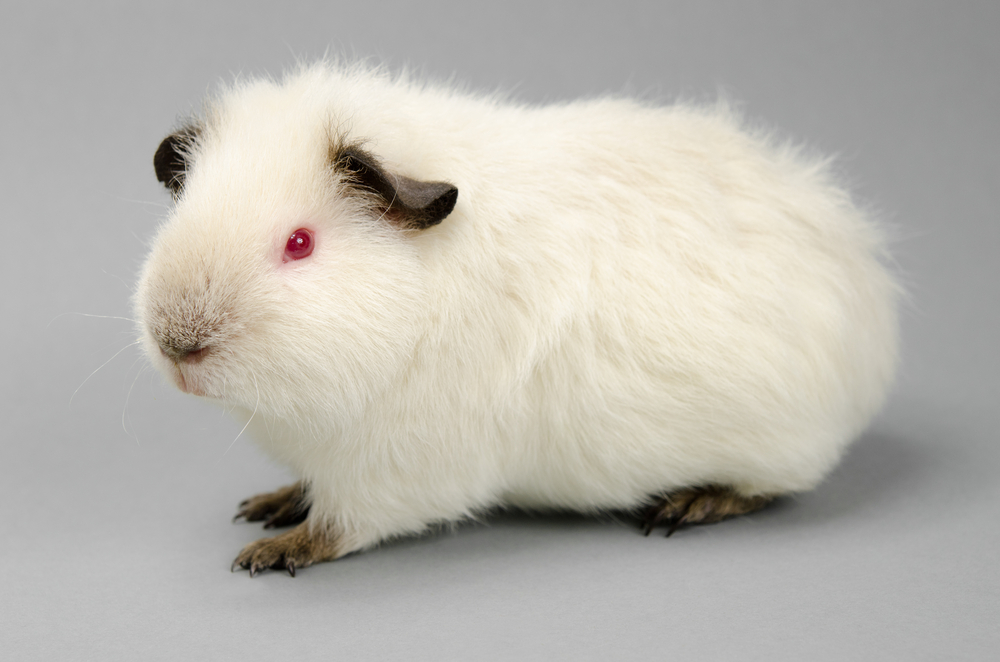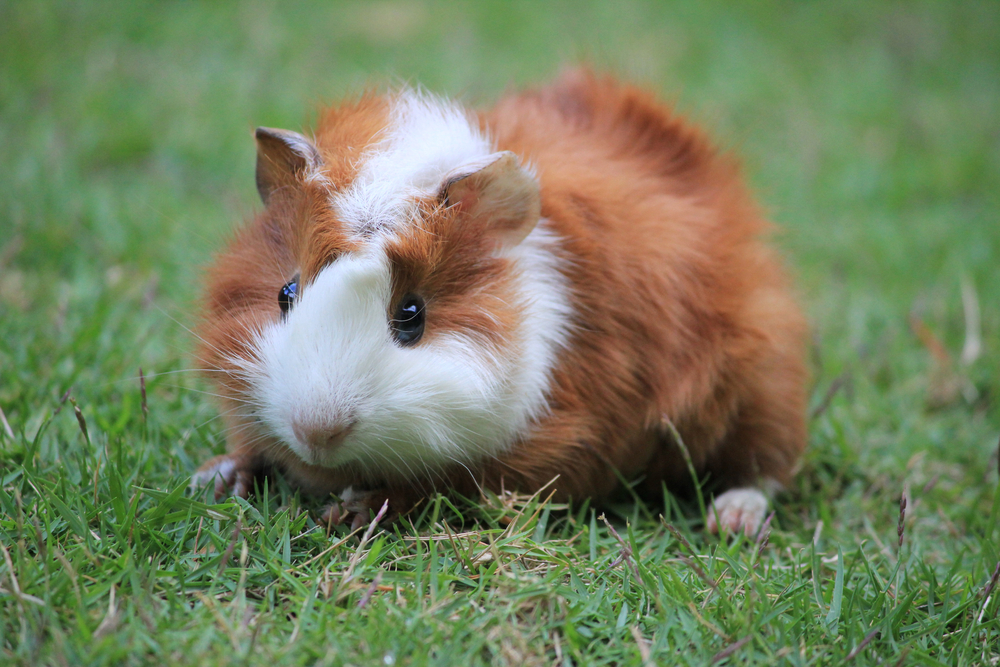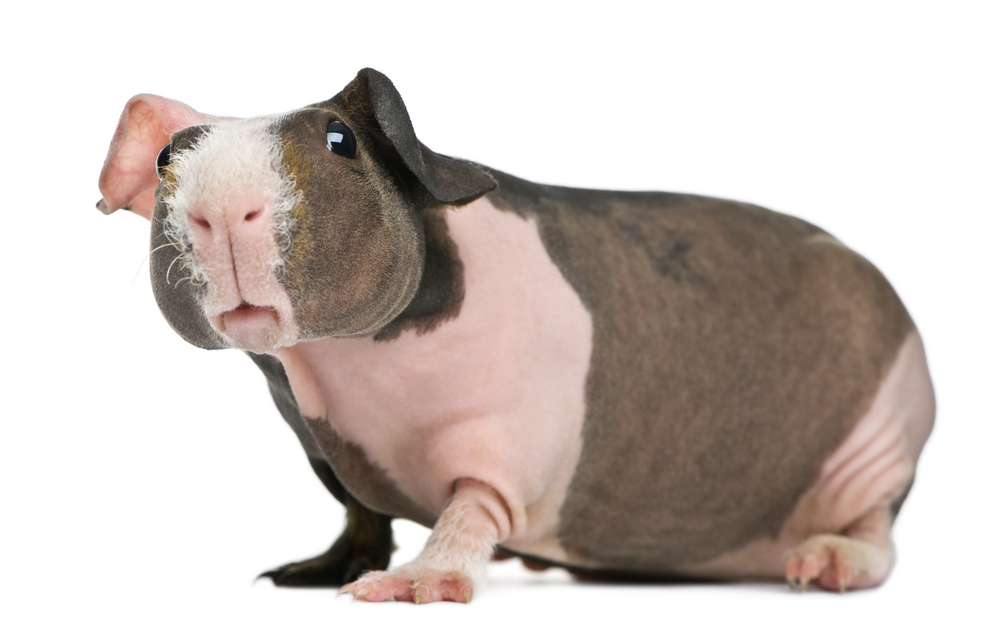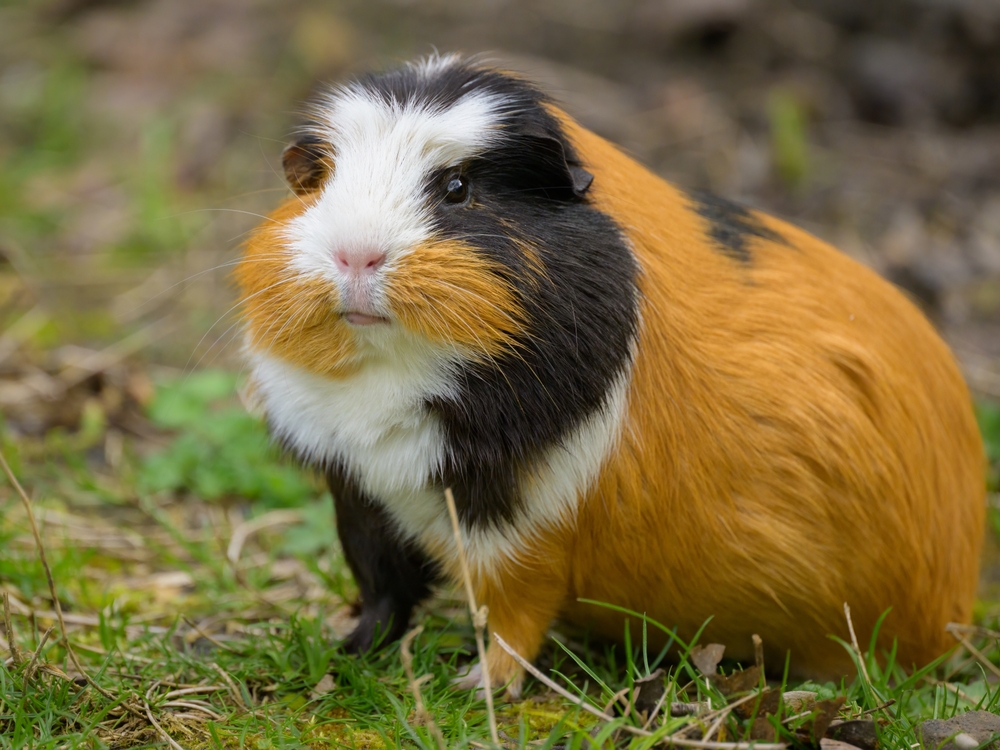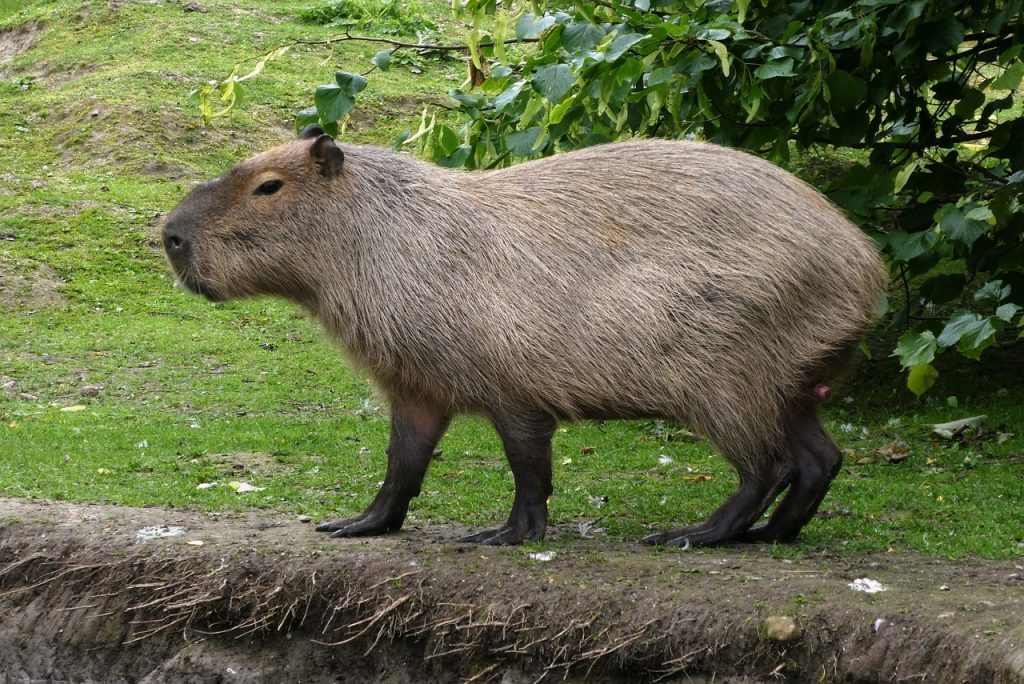The Himalayan guinea pig is a domesticated breed of the species Cavia porcellus. Its closest relatives are other guinea pig breeds, as they all share the same ancestry. In the wild, its closest kin is the montane guinea pig (Cavia tschudii) of South America, from which domestic guinea pigs are thought to descend.
About
The Himalayan Guinea Pig is a striking breed of the domestic guinea pig, admired for its unique “colorpoint” coat pattern that resembles the Himalayan rabbit or Siamese cat. Born entirely white, these guinea pigs gradually develop dark pigment on their ears, nose, and feet as they age, with the contrast becoming more pronounced in cooler temperatures. This striking appearance has made them one of the most recognizable and sought-after guinea pig breeds among enthusiasts.
Himalayan Guinea Pigs are medium-sized cavies, typically weighing between 900–1,200 grams (2–2.5 lbs) and measuring about 20–25 cm (8–10 in) long. They have short, dense fur that is smooth and easy to maintain, making them a good choice for owners who want a low-maintenance yet visually distinctive pet. Like all guinea pigs, they are gentle, highly social animals that thrive in pairs or groups, where they communicate with each other using an array of chirps, squeaks, and purr-like sounds.
Their care is similar to that of other guinea pigs, requiring a balanced herbivorous diet of hay, vegetables, pellets, and vitamin C supplementation. Himalayans are especially sensitive to light, and prolonged exposure to sunlight can cause their dark points to fade. They also require a stress-free environment, as anxiety can affect their coat quality and coloration. Breeding is standard for guinea pigs, with gestation lasting around 59–72 days and litters averaging 2–4 pups.
The Himalayan Guinea Pig is not a separate species but a recognized breed of the domestic guinea pig. Its scientific name is Cavia porcellus, and it belongs to the family Caviidae, which includes cavies, maras, and other South American rodents. With attentive care, they typically live 5–7 years, bringing both companionship and charm to households.
Physical Characteristics
Himalayan guinea pigs are a distinctive and elegant breed recognized for their pointed coloration and smooth coat.
Coat:
They have short, fine, and glossy fur that is pure white across most of the body. Their hallmark feature is pointed coloration, meaning the nose, ears, and feet develop darker shades—typically black, brown, or sepia—similar to Siamese cats. These points often darken with age or when exposed to cooler temperatures.
Face:
Their face is rounded with large, expressive eyes that are usually a striking ruby-red or deep pink. Their ears are broad and drooping, with darker pigment marking the tips.
Body:
The body is compact, cylindrical, and well-balanced, with a smooth coat requiring minimal grooming. Because they lack rosettes or long fur, they have a sleek, polished appearance.
Size:
-
Length (Body): 8 to 12 in (20 to 30 cm)
-
Shoulder Height: About 4 to 5 in (10 to 13 cm)
Weight:
-
Adults generally weigh 1.5 to 2.5 lbs (700 to 1,100 g).
The Himalayan guinea pig’s distinct contrast between its bright white coat and dark points makes it one of the most visually striking and easily recognizable guinea pig breeds.
Reproduction
The reproductive cycle of Himalayan guinea pigs is consistent with that of other guinea pig breeds, with adaptations that ensure well-developed pups at birth.
1. Mating and Courtship:
Himalayan guinea pigs breed year-round when males (boars) and females (sows) are housed together. Courtship involves vocalizations, gentle nudging, and chasing behaviors. They are social animals, and mating often occurs readily.
2. Gestation:
The gestation period ranges from 59 to 72 days, averaging about 68 days. This extended pregnancy length allows pups to develop fully before birth.
3. Birth of Pups:
Litter sizes typically range from 1 to 6 pups, with an average of 3 to 4. Himalayan pups are precocial, born with open eyes, teeth, fur, and the ability to walk within hours.
4. Care and Nurturing:
Mothers nurse their young but pups also begin nibbling solid food almost immediately. Himalayan pups are slightly more delicate at birth compared to furrier breeds, but maternal care ensures their early development.
5. Weaning and Growth:
Pups are generally weaned at 3 weeks of age. At this point, males are separated to prevent early breeding, as guinea pigs mature quickly.
6. Independence and Maturity:
-
Females: Can become fertile as early as 4 weeks.
-
Males: Reach maturity at around 8–10 weeks.
Because of their fast maturity rates, controlled breeding management is important to prevent health risks in young females.
The reproductive strategy of Himalayan guinea pigs ensures that pups are born highly developed and capable of survival, which reflects the species’ adaptation as a domesticated breed.
Lifespan
Himalayan guinea pigs, known for their striking white coats with dark points, have a lifespan shaped by their care, diet, and environment.
Lifespan in the Wild (Not Applicable):
Himalayan guinea pigs are a domesticated breed of guinea pig and are not found in the wild. Their closest wild relatives, such as the montane guinea pig (Cavia tschudii), live in South America.
Lifespan in Captivity:
With proper care, Himalayan guinea pigs typically live 5 to 7 years, though some individuals may reach up to 8 years. This is comparable to other short-haired guinea pig breeds.
Threats to the Himalayan Guinea Pig:
-
Dietary Deficiencies: As with all guinea pigs, lack of vitamin C can cause scurvy, a serious condition that shortens lifespan.
-
Temperature Sensitivity: Their pointed coloration is influenced by cooler climates, but exposure to extremes of heat or cold can negatively affect health.
-
Genetic Factors: Selective breeding for their distinctive appearance may predispose some individuals to weaker constitutions.
-
Dental and Digestive Issues: Overgrown teeth and inadequate fiber intake can lead to health complications if not managed.
Care and Protection:
A stable environment, a diet rich in vitamin C, routine veterinary care, and regular social interaction are essential for Himalayan guinea pigs to thrive. With attentive husbandry, they can enjoy long and healthy lives as affectionate companions.
Eating Habits
Himalayan guinea pigs are herbivores with dietary needs that match other guinea pig breeds, though their striking appearance requires no special nutritional differences.
Diet:
Their diet is centered on hay, which provides essential fiber for healthy digestion and natural tooth wear. Fresh vegetables and leafy greens are required daily, with special emphasis on those rich in vitamin C such as bell peppers, kale, and parsley, since guinea pigs cannot produce vitamin C on their own. Small portions of fruit may be offered as treats, and fortified guinea pig pellets add consistent nutrition.
Feeding Behavior:
Himalayan guinea pigs graze continuously, nibbling throughout the day and night. Their metabolism is steady and requires frequent intake of fiber-rich food. They enjoy foraging and benefit from scatter feeding or leafy vegetables provided in bunches to mimic natural grazing behavior.
Special Considerations:
-
Vitamin C: Deficiency causes scurvy, so daily supplementation is critical.
-
Hydration: Fresh water should always be available.
-
Dietary Balance: Sudden changes in diet can upset digestion; new foods must be introduced gradually.
Social Eating:
Like other guinea pigs, Himalayans are social animals and often eat alongside companions. Group feeding reduces stress and encourages healthy eating patterns.
Himalayan guinea pigs’ grazing habits and reliance on vitamin C highlight the importance of a carefully balanced diet to maintain their health and longevity.
Uniqueness
The Himalayan guinea pig is one of the most visually distinctive guinea pig breeds, admired for its elegant markings and striking appearance.
Pointed Coloration:
Himalayans are known for their white coats with dark points on the nose, ears, and feet, resembling the pattern of Siamese cats. Interestingly, the intensity of these points deepens in cooler temperatures, meaning their markings can change slightly depending on their environment.
Red or Pink Eyes:
They typically have ruby-red or pink eyes, which stand out sharply against their white fur and dark points, giving them a unique and memorable look.
Temperature-Influenced Features:
Because their coloration is heat-sensitive, cooler climates bring out darker points, while warmer settings may lighten them. This trait makes each individual’s appearance subtly dynamic.
Domesticated Origins:
Himalayan guinea pigs are not found in the wild; they are a domesticated breed of Cavia porcellus, developed for their rare and attractive coat pattern.
Gentle Temperament:
They are generally calm, friendly, and social, making them excellent companions. Their combination of beauty and affectionate nature makes them highly sought after in shows and as pets.
The Himalayan guinea pig’s unique coat pattern, eye color, and temperature-sensitive markings make it one of the most recognizable and distinctive breeds within the guinea pig family.
Be the First to Share Photos of This Species.
FAQ’s
1. What is the closest species to the Himalayan Guinea Pig?
2. How does the Himalayan Guinea Pig compare to other guinea pigs?
Himalayan guinea pigs are unique for their pointed coloration—white bodies with darker noses, ears, and feet—that darkens in cooler climates.
They also often have striking red or pink eyes. In size, diet, reproduction, and behavior, they are similar to other guinea pig breeds, but their appearance makes them one of the most recognizable and show-worthy varieties.
3. What national parks provide the best chance to see a Himalayan Guinea Pig?
Himalayan guinea pigs are a domesticated breed and are not found in the wild or in national parks.
To see guinea pigs in natural habitats, one would need to visit parts of South America’s Andes, where wild relatives like Cavia tschudii still roam.



































































